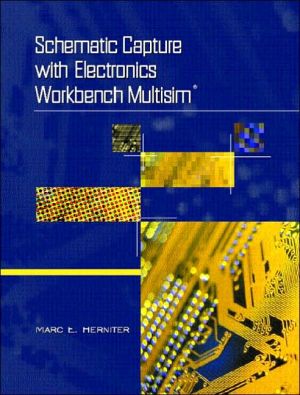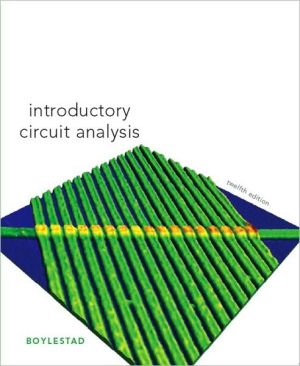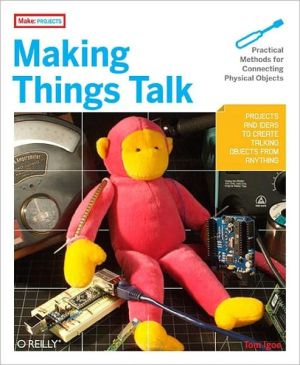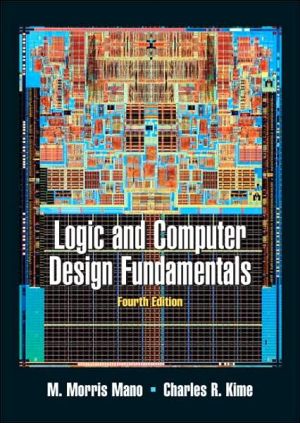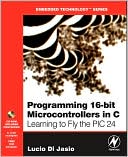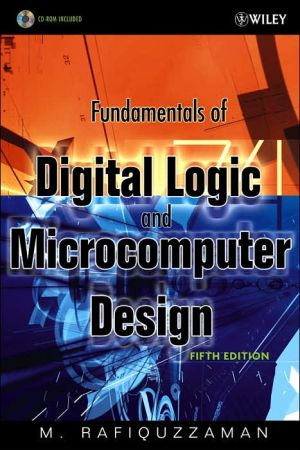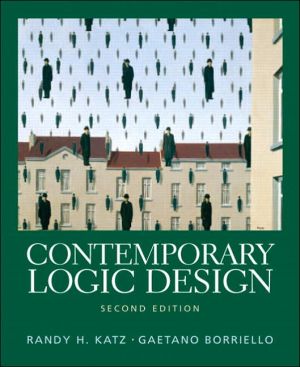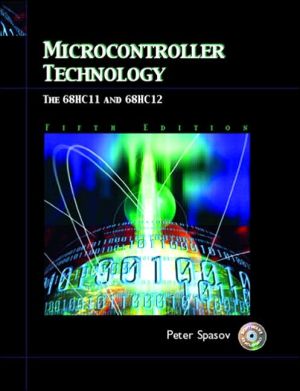Schematic Capture With Electronics Workbench MultiSIM
The first book on the market that teaches how to use the Electronics Workbench MultiSIM software, this most in-depth manual contains step-by-step screen captures that show how to create a circuit, how to run different analyses, and how to obtain the results from those analyses, allowing the user to self-teach. It contains topics that will be useful throughout the users' careers, making it an invaluable reference work. It features simulations of the same circuits using both the MultiSIM...
Search in google:
The first book on the market that teaches how to use the Electronics Workbench MultiSIM software, this most in-depth manual contains step-by-step screen captures that show how to create a circuit, how to run different analyses, and how to obtain the results from those analyses, allowing the user to self-teach. It contains topics that will be useful throughout the users' careers, making it an invaluable reference work.It features simulations of the same circuits using both the MultiSIM Virtual Lab and SPICE analyses to show users the connection between circuit operation, lab measurements, and SPICE simulation results.An invaluable handbook and reference guide for electrical engineers, electronics engineers, circuit simulation specialists, computer engineers, power electronics employees, analog electronics employees, and project managers.
This manual is designed to show students how to use the Multisim circuit simulation program from Electronics Workbench. It is a collection of examples that show students how to create a circuit, how to run the different analyses, and how to obtain the results from those analyses. This manual does not attempt to teach students circuit theory or electronics; that task is left for the main text. Instead, the manual takes the approach of showing students how to simulate many circuits found throughout the curriculum. An example could be the DC circuit shown below.\ It is assumed that the student has been given enough information to analyze the circuit. This manual assumes that the student wishes to check his or her answers (or intuition) with this program. The student would construct the circuit as shown in Part 1 and then run either some of the DC simulations in section 3.A or the DC Sweep in section 4.A.\ This manual was designed to be used by students for their entire educational career and beyond. Since the parts are arranged by analysis type, they contain a range of examples from circuits covered in first-semester circuit theory courses to senior-level amplifier and switching circuits. Sections that are too advanced for beginning students may be skipped without loss of continuity. All parts contain both simple circuits and advanced circuits to illustrate the analysis types. Sections do not have to be covered sequentially. Individual examples can be identified that apply to specific courses. However, the following sequence is suggested for first-time users. All beginning users should follow Parts I and 2 completely to learn how to draw and save schematics, and how to use the Postprocessor and Grapher. Multisim instruments such as the Multimeter and Oscilloscope are covered in the sections in which they are used. All students should follow some of the examples in Parts 3 and 4 that are relevant to the course and also cover a few of the examples that may apply to earlier courses (if any). The early examples in these parts have the most step-by-step detail of how to use the software. Part 6 covers time domain analysis. The first section discusses the use of the oscilloscope, so-this section should be assigned before any of the following sections are covered.\ This manual contains examples that apply to courses throughout the curriculum. Introductory circuits classes usually cover DC circuits, AC circuits with phasors, and transient circuits with a single capacitor (or inductor) and a switch. Examples are given to cover these types of problems. After reviewing the examples in this manual, a student should be able to simulate similar problems. A typical first electronics course may cover transistor biasing, amplifier gain, and amplifier frequency response. Examples of these analyses are also given.\ Exercises are given at the end of each section. These exercises specify a circuit and give the simulation results. The students are encouraged to work these problems to see if they can obtain the same simulation results. The exercises are intended to give students practice in using the software, not to teach them circuits. My philosophy is that simulation software should be used only to verify one's own calculations or intuition. In my classes I assign problems that are worked by hand calculation, simulated with Multisim, and then tested in the lab. The students then compare the measured results to the hand calculations and Multisim simulations. Without hand calculation, it is impossible to know if the Multisim simulations are correct.\ Software Included with the Manual\ The CD-ROM contains all of the circuit files used as examples in this manual. If you have a problem with one of the circuits you are simulating by following the text, you can view the circuit on the CD-ROM and see how it differs from your circuit.
1. Editing a Basic Schematic.2. The Postprocessor and the Grapher.3. DC Measurements.4. DC Sweep.5. Magnitude and Phase Simulations.6. Time Domain Analyses.7. Digital Simulations.8. Index.
